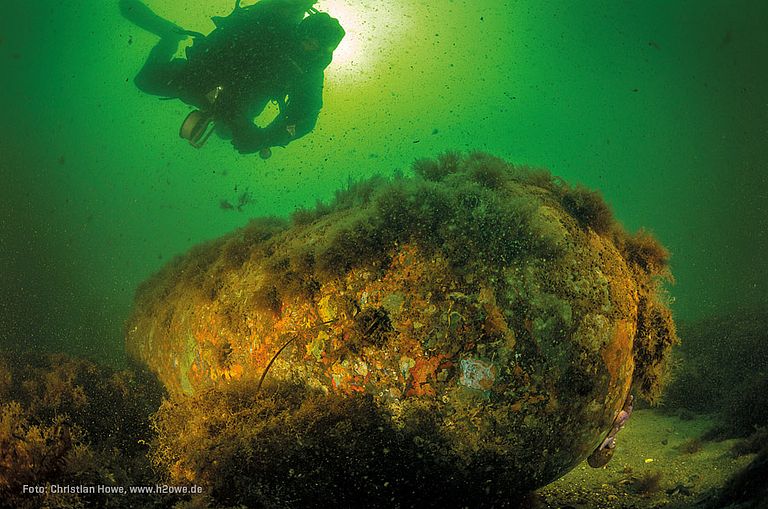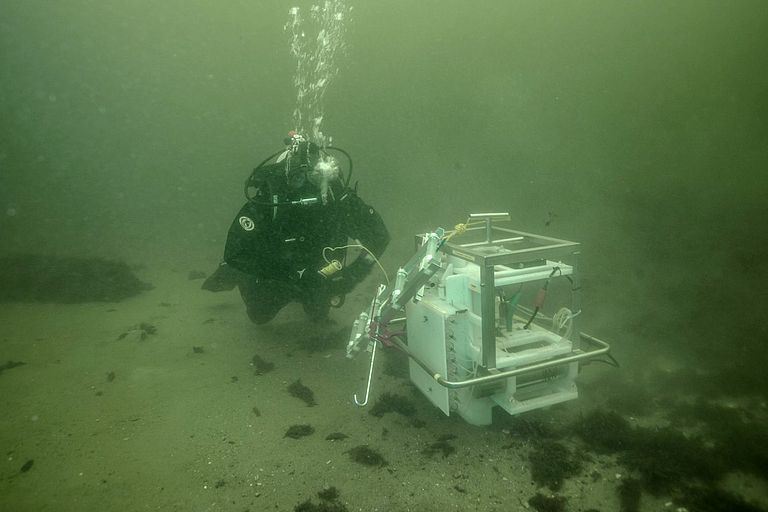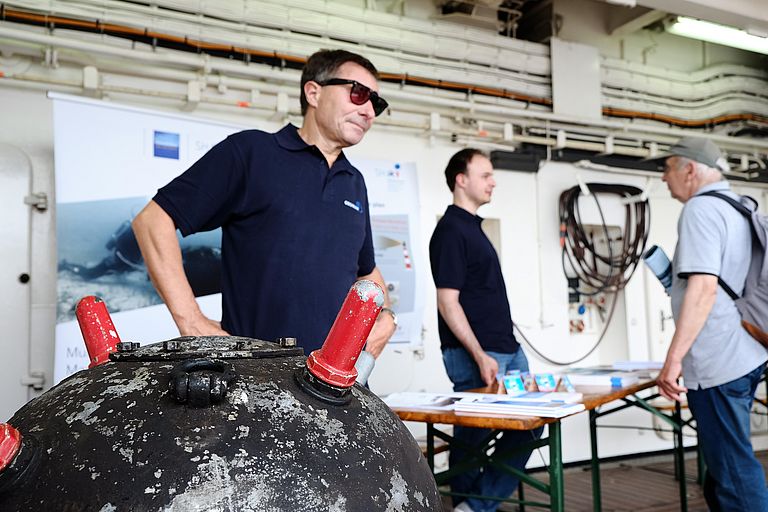Image of the month: March 2019
Old munitions in the Baltic Sea
Our image of the month shows a research diver of the Christian-Albrechts-Universität zu Kiel in the western Baltic Sea inspecting a torpedo head. After the end of the Second World War, German and Allied troops deposited tons of munitions in the Baltic and North Sea. Sea mines, air and water bombs, torpedo heads and shells still rust on the seabed 70 years later. Today, some of the metal casings are severely damaged. Explosives are exposed and toxic substances, like TNT and its breakdown products can get into the water. These are classified as carcinogenic and could potentially enter the food chain in dissolved or particulate form.
The problem of old munition does not only affect German coastal waters, but also coastal regions of almost all continents. This is pointed out by researchers from the GEOMAR-led BMBF research project UDEMM (Environmental Monitoring for the Delaboration of Munitions in the Sea) in cooperation with the University of Kiel, the IOW and the State of Schleswig-Holstein. That is why the scientists urge to close gaps in knowledge about the ammunition and permanently observe known munitions areas (monitoring). Apart from the fact that more and more explosives are exposed as a result of progressive corrosion, ammunition poses a risk to the increasing shipping traffic. Besides, it is also a problem in the construction of submarine pipelines or offshore wind farms.
The UDEMM project focuses on the one ammunition deposit in the Baltic Sea near the Kiel Fjord. It tries to map, identify and depict the ammunition located there. At the same time, concentrations of explosive-typical compounds in water, sediment and organisms are measured. Several biomonitoring stations with mussels were deployed and also analysed.
Our gratitude goes to Christian Howe, who took this image of the month during a research dive and provided it to us.
Further information:
https://www.schleswig-holstein.de/DE/UXO/uxo.html
Christian Howe's Website:





